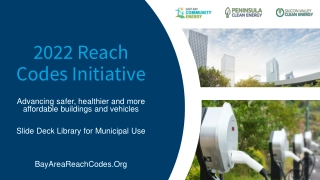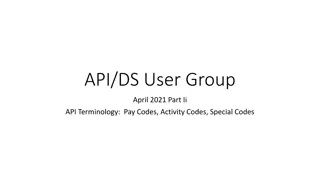Efficient Near Miss Reporting via QR Codes
Near miss reporting via QR codes offers a streamlined and efficient method for employees to report potential hazards or incidents. This system involves generating unique QR codes linked to a reporting system, strategically placing them in areas prone to near misses, enabling easy employee interaction for reporting incidents, and facilitating swift submission and follow-up by designated personnel. The benefits include enhanced efficiency, accuracy, timeliness, data collection, and employee engagement. Embracing this modern approach enhances safety culture and proactive hazard prevention.
Uploaded on Apr 16, 2024 | 4 Views
Download Presentation

Please find below an Image/Link to download the presentation.
The content on the website is provided AS IS for your information and personal use only. It may not be sold, licensed, or shared on other websites without obtaining consent from the author.If you encounter any issues during the download, it is possible that the publisher has removed the file from their server.
You are allowed to download the files provided on this website for personal or commercial use, subject to the condition that they are used lawfully. All files are the property of their respective owners.
The content on the website is provided AS IS for your information and personal use only. It may not be sold, licensed, or shared on other websites without obtaining consent from the author.
E N D
Presentation Transcript
NEAR MISS REPORTING by QR CODE www.hsestudyguide.com
Near Miss Reporting via QR code Near miss reporting via QR code is a streamlined and efficient method for employees to report potential hazards or incidents that could have led to accidents or injuries. www.hsestudyguide.com
Here's how it typically works: QR Code Generation: The company generates unique QR codes linked to their near miss reporting system. Each QR code is specific to a location or a type of near miss incident. Placement of QR Codes: These QR codes are strategically placed in areas where near misses are likely to occur, such as manufacturing floors, construction sites, or office spaces. Employee Interaction: When an employee notices a near miss incident or hazard, they can use their smartphone or any device with a QR code reader to scan the QR code nearest to them. Reporting Form: Scanning the QR code directs the employee to a digital reporting form specifically designed for near miss incidents. This form typically includes fields for the date, time, location, description of the incident, potential causes, and any corrective actions taken or recommended. www.hsestudyguide.com
Here's how it typically works: Submission: Once the employee completes the form, they submit it electronically. The information is then sent directly to the designated personnel responsible for investigating and addressing near miss incidents within the organization. Follow-Up and Analysis: The designated personnel review the reported near misses, analyze the data, and take appropriate actions to address any underlying safety concerns. This may involve implementing corrective measures, providing additional training, or making changes to work processes or equipment to prevent future incidents. www.hsestudyguide.com
Benefits of Near Miss Reporting via QR Code: 1. Efficiency: Employees can quickly report near misses on the spot, without the need for paper forms or lengthy procedures. 2. Accuracy: Digital reporting reduces the risk of errors or omissions compared to manual reporting methods. 3. Timeliness: Near miss incidents can be reported and addressed promptly, helping to prevent future accidents or injuries. 4. Data Collection: The digital nature of QR code reporting allows for easy aggregation and analysis of near miss data, enabling organizations to identify trends and patterns to improve overall safety. 5. Engagement: Involving employees in near miss reporting promotes a culture of safety and encourages proactive hazard identification and prevention. www.hsestudyguide.com
Sample QR Code Near Miss Reporting Example: Scenario: Imagine you're an employee working on a manufacturing floor. While performing your tasks, you notice a loose electrical wire hanging dangerously close to a piece of machinery. Scan the QR Code: Using your smartphone, you scan the QR code located nearby that is labeled "Near Miss Reporting." Access Reporting Form: The QR code directs you to a digital reporting form specifically designed for near miss incidents. The form asks for details such as the date, time, location, and description of the incident. Report the Near Miss: You fill out the form, providing a detailed description of the loose electrical wire, its location, and the potential hazards it poses to yourself and other workers. Submit the Form: After completing the form, you submit it electronically. www.hsestudyguide.com
Sample QR Code Near Miss Reporting Example: Scenario: Imagine you're an employee working on a manufacturing floor. While performing your tasks, you notice a loose electrical wire hanging dangerously close to a piece of machinery. Investigation and Action: The designated safety personnel receive the report and promptly investigate the incident. They assess the situation, address the loose electrical wire, and implement corrective measures to prevent similar incidents from occurring in the future. This may involve repairing or securing the wire, providing additional training to employees on electrical safety, and conducting regular inspections to identify and address potential hazards. Feedback and Follow-Up: You receive feedback acknowledging your report and thanking you for your vigilance in identifying and reporting the near miss. The organization emphasizes the importance of near miss reporting in maintaining a safe work environment and encourages continued participation from all employees. www.hsestudyguide.com
Through the QR code near miss reporting system, the organization effectively identifies and addresses potential hazards, promotes a culture of safety, and works towards preventing accidents or injuries in the workplace. www.hsestudyguide.com























